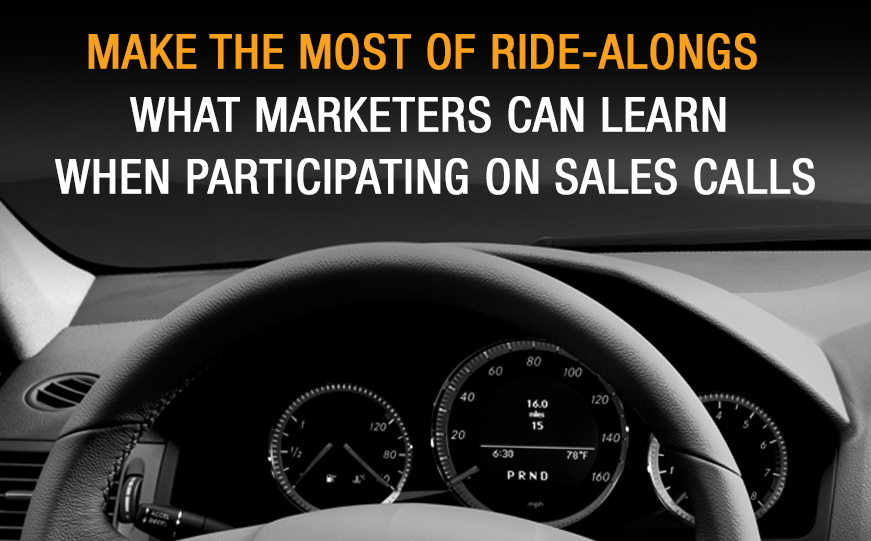It’s no secret that for many building product brands, there is a big gap between the sales and marketing departments. This gap prevents marketers from truly understanding the needs of their target audiences, and producing relevant marketing materials that help arm salespeople in their work.
This lack of sales and marketing alignment is a big problem with a relatively straightforward solution.
Ride-alongs.
One of the simplest, best ways marketers can get a feel for what’s happening in the world is to spend a day with a salesperson… accompanying them on sales calls and observing conversations with customers.
It’s not a new concept, but one that is too often overlooked.
Just the simple act of getting away from their corporate work space and into the field can be an eye-opening opportunity. But to really get the most out of ride-alongs, marketers should look for ways they can impact the buyer’s journey.
The Customer Journey – 3 Modes
The customer journey can be categorized into three modes – substitution, augmentation and disruption. In most cases, any one of those opportunities may be influencing the customer’s purchase decision.
During ride-alongs, marketers must look for clues for which mode their brand’s customers are in… and as such, how they should approach marketing products, services or brands.
Substitution
This is the most basic mode within the customer journey. If a distributor, dealer or contractor wants to buy from you, it is most likely at the expense of another brand. Or vice versa.
During ride-alongs, marketers should look for clues that customers are open to substituting the products they currently buy. Most importantly, they should seek to determine why.
The “why” is important, because it will tell marketers what features to emphasize in an effort to convince customers to make the substitution – or rather – to avoid being substituted for another.
One word of caution: if customers indicate that price would be a motivating factor to switch to (or from) your brand, it’s a cause for concern. This red flag means your product is at risk of being commoditized. And as a result, you should look for ways to differentiate your brand.
Augmentation
Often brands sell their products as part of a system… a group of components designed to work together. Customers often will buy from fewer suppliers, rather than – mix and match from multiple brands – because it’s easier or because of other loyalty advantages.
Occasionally, customers will augment that system with another brand’s products.
If your brand is the one that offers the system approach, that’s a good place to be. You want to be able to keep customers from seeking to augment your system with competitors’ one-off brands. Alternately if you are the one-off brand, in turn, you’ll want customers to consider augmentation.
Disruption
The third – and most difficult mode of the customer journey – is disruption. This is when customers alter their purchasing habits because a brand changes the game. By introducing revolutionary new products or how they position or market them.
This is basically the holy grail for marketers. The opposite of commoditization, brands that are able to disrupt their markets create a category of “one”. And as an opportunity, there is little competitors can do to compete.
For marketers participating with sales ride-alongs, opportunities for disruption are usually harder to spot.
In this case, you’re looking for what’s not there. What’s missing from your customers’ daily lives and operations? How are all the brands they deal with communicating with them?
And critically… how can you do it differently?
Finding a way to disrupt your market is a tall order, but the opportunity starts with getting to know your customers. Listening to them. And spotting patterns.
Those patterns will guide you in your team’s efforts to create marketing that supports sales. And marketing that resonates best with your customers.




